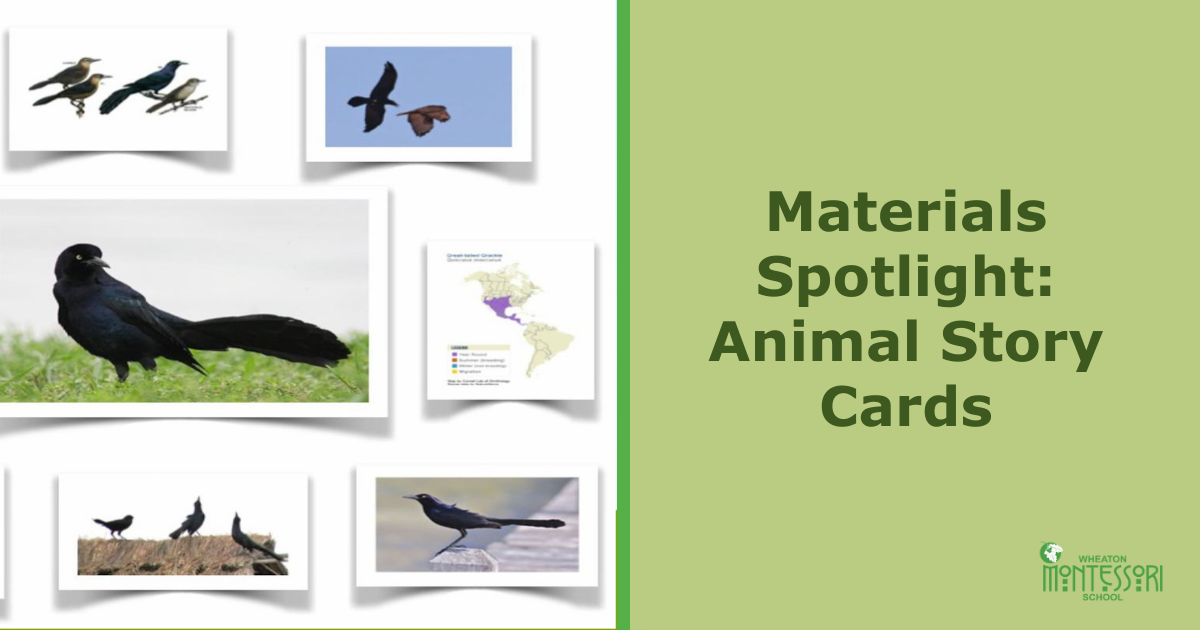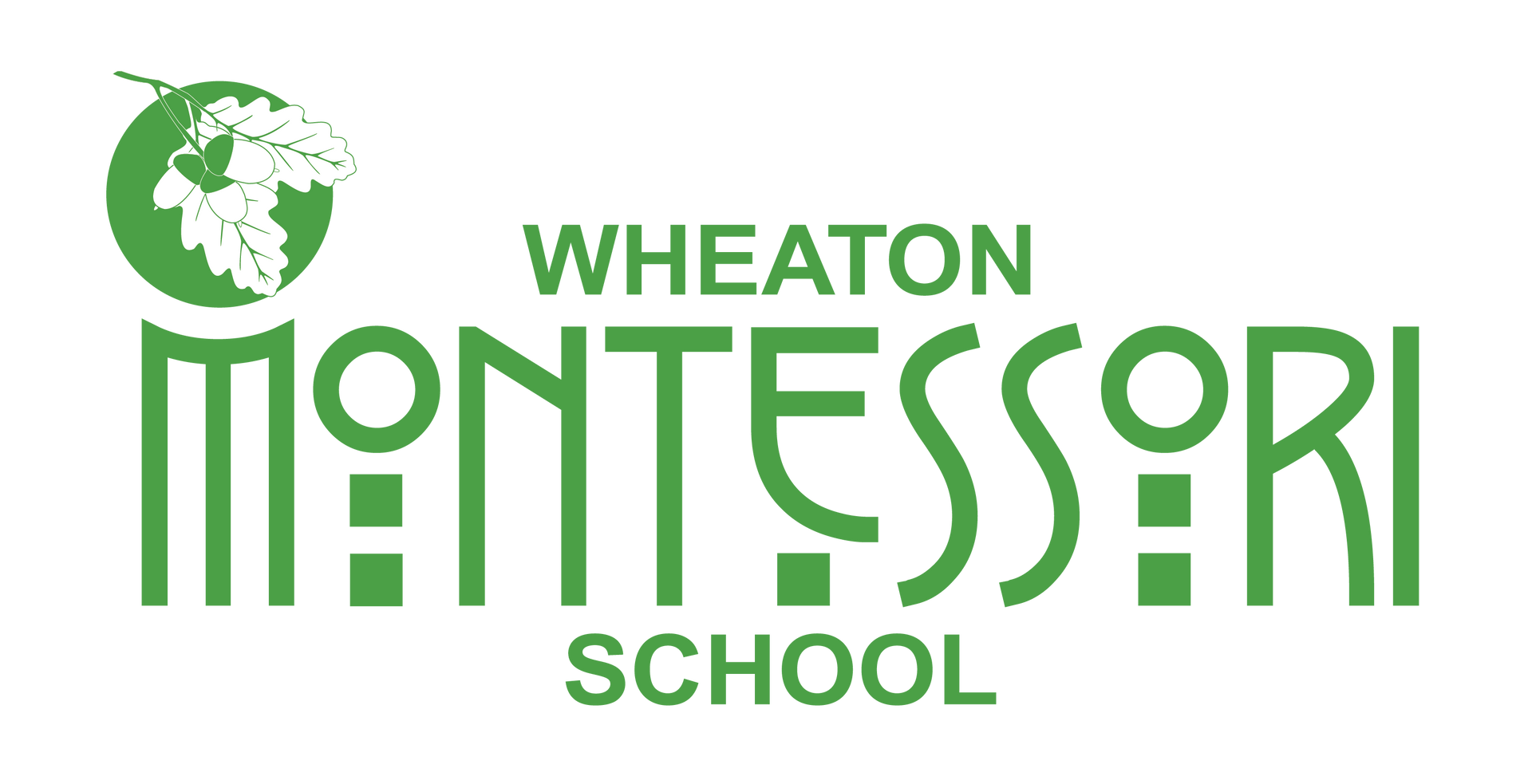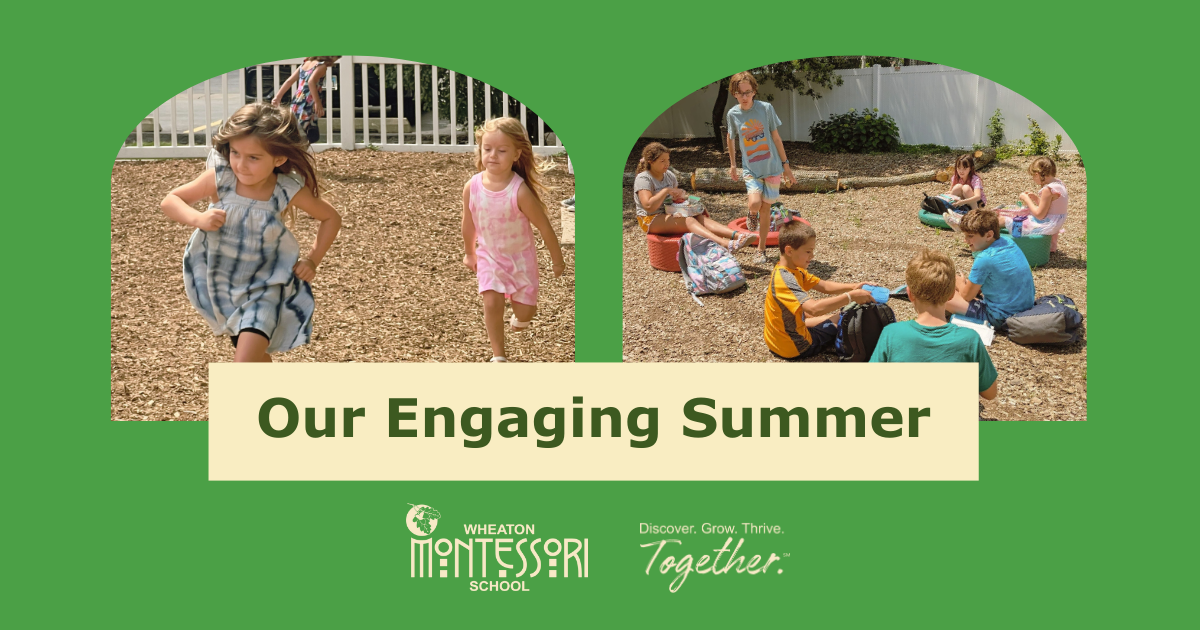
Do your children adore animals? Our elementary students (and even some older primary students) at Wheaton Montessori School often love to start researching animals. To capitalize upon this interest and use it to build the base for more in-depth research skills, we have a set of materials called Animal Story Cards. These pictures and story cards introduce animals that live in the region. They are comprised of a few collections with pictures and text.
The collection of cards includes a large picture of the animal in its natural environment, a large text card with general information about the animal, and then a series of smaller images and matching text cards that show and detail information about the animal’s habitat, how it protects itself, its natural diet if it born alive or hatches from eggs, and how it cares for its young.
This material helps children begin to classify and organize their zoological awareness of native animals. We also try to gear the stories to the needs of the animals with which the children may have had first-hand experience so that the activity reinforces their prior knowledge.
Our information draws children’s attention to certain aspects of animals’ lives and the interconnections of animals through various food chains or predator/prey relationships. Each folder focuses on one animal and contains picture cards and text material relevant to that animal’s basic needs.
We ensure the selected animals have contrasting qualities (e.g., a mammal, a bird, an amphibian, etc.).
In addition to providing a base for future research skills, this material also increases children's awareness and knowledge of animals that live in the surrounding environment, highlights differences among animals, cultivates an appreciation for animals, and provides an interesting reading activity.
When we present this material, we gather a small group of children and place the large picture card in the center of the rug or table. Often, we start with a little story about the animal, and as we tell the story, we introduce the related smaller picture cards as they become relevant.
We only have three or four of these animal stories in the classroom so that the children can use this material as a model for their research and work. Ultimately, we want children to turn to books in the classroom and the library for further information. Those in the early stages of reading and research often enjoy drawing the animal and a picture of what it eats, how it cares for its young, etc.
Beginner readers can access the text and practice their reading through short labels that match a photo-like vocabulary enrichment in their previous primary classrooms. Groups of children with different reading abilities work together to read longer text within context.
Children get excited about making an animal story set of their own. This activity results in a great deal of concentrated work, often presentations and student-made activities to share with others.
As children use the Animal Story Cards, they continue to realize that animals have fundamental needs just like humans do!
We’d love for you to visit our school to see this and the many other ways we cultivate an appreciation for the natural world. Our current families are invited to schedule their classroom observations by clicking on the links below.
Adolescent Community Classroom Observation
Ms. Searcy’s Upper Elementary Classroom Observation
Mrs. Fortun’s Lower Elementary Classroom Observation
Mrs. Mayhugh’s Lower Elementary Classroom Observation
Mrs. Berdick’s Primary Classroom Observation
Ms. Carr’s Primary Classroom Observation
Ms. Chiste’s Primary Classroom Observation
Mrs. Rogers’s Primary Classroom Observation
Prospective families are invited to schedule a tour and discover how we foster a love for the natural world in children aged 2.5 through to 9th grade.


